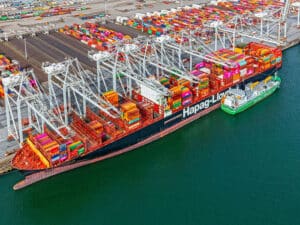
LNG fueled option for containership in-port power
Written by Nick Blenkey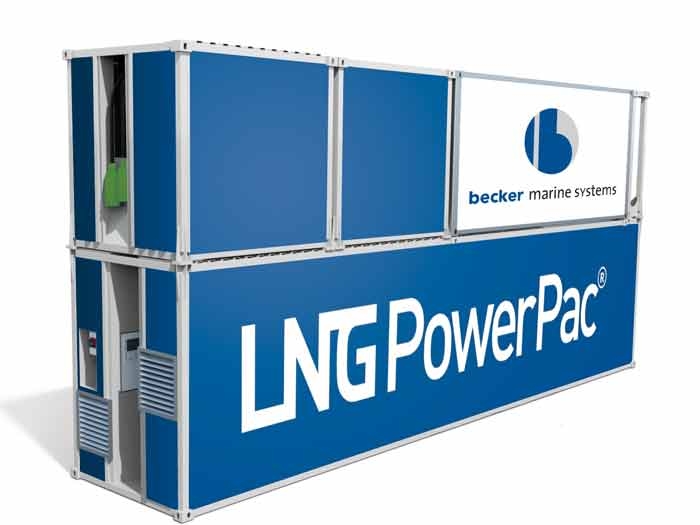
Becker LNG PowerPac
FEBRUARY 16, 2016 — An alternative shoreside power solution for containerships developed by Hamburg based Becker Marine Systems is to receive funding support from Germany’s Federal Ministry of Transport and Digital Infrastructure.
The LNG PowerPac is a compact unit the size of two 40-foot containers that combines a gas-powered generator with an output of 1.5 Megawatts and an LNG tank in a limited amount of space.
Once a containership is moored, the LNG PowerPac is placed on board, using the port’s regular loading equipment, to provide energy to the onboard power supply during the vessel’s layover at port — giving a significant reduction in emissions in comparison with operation of the ship’s auxiliary engines.
“With LNG PowerPacs we are creating a modern, environmentallyfriendly, safe and economical option for supplying power based on LNG to containerships during layovers at port,” says Henning Kuhlmann, Managing Director, Becker Marine Systems.As part of the planned pilot project, for the first time ever containerships will be supplied with power from LNG PowerPacs during layovers at the Port of Hamburg.
“An LNG PowerPac is equipped with a 20-foot LNG ISO tank. The quantity of 8.2 tons of LNG provided in this way enables an efficient supply of energy on board for up to 30 hours,” says Ralf-Thomas Rapp (Director LNG Hybrid, Becker Marine Systems.
For ships spending a longer time in port, a cascading option provides two tank containers arranged on top of each other for each LNG PowerPac, ensures a continuous supply of power for up to 60 hours.
Two LNG PowerPacs can also be operated in tandem on board a ship; two LNG PowerPacs arranged side by side are able to supply up to 3 Megawatts of power to ships with a greater demand for power.
“By funding the LNG PowerPac project, the Federal Government is promoting the use of LNG as an alternative fuel at seaports. We are thus implementing the recommendations of the Federal Government’s mobility and fuel strategy. The idea is to make apparent the advantages of the fuel of the future, liquefied natural gas or LNG, across systems in selected regional demonstration and pilot projects. By using LNG, the emission of nitrogen oxide can be almost completely eliminated when compared to conventional diesel engines. Also with respect to greenhouse gases, LNG has a significantly lower footprint,” says Enak Ferlemann, Parliamentary Secretary at the Ministry of Transport and Digital Infrastructure.
The LNG PowerPac was selected for funding based on advantages that include:
- “Cable-free” power supply of containerships: The Flexible LNG PowerPac as an integrated “isolated solution” for the supply of energy on board
- Quick and flexible connection via standardized loading equipment
- Integration into the existing container loading structure at the ship’s stern – no time-consuming connecting procedure via a cable management system
- The output generated by LNG PowerPacs matches the voltage of the onboard electrical system and can be controlled by onboard electronics with no additional transformers and frequency converters requiredIndependence from costly shore power infrastructure
- No adjustments of the harbor infrastructure is required for the use of the special containers and there are no additional costs for the terminal operator.

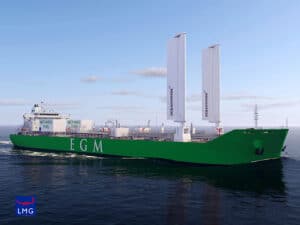
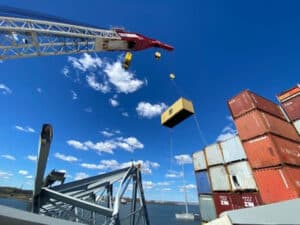
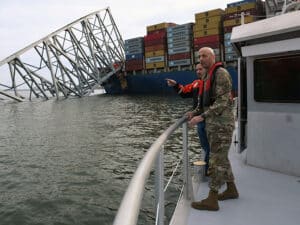
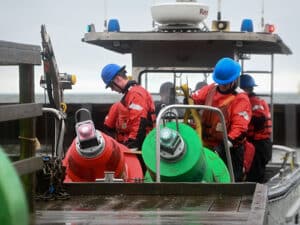
Leave a Reply
You must be logged in to post a comment.